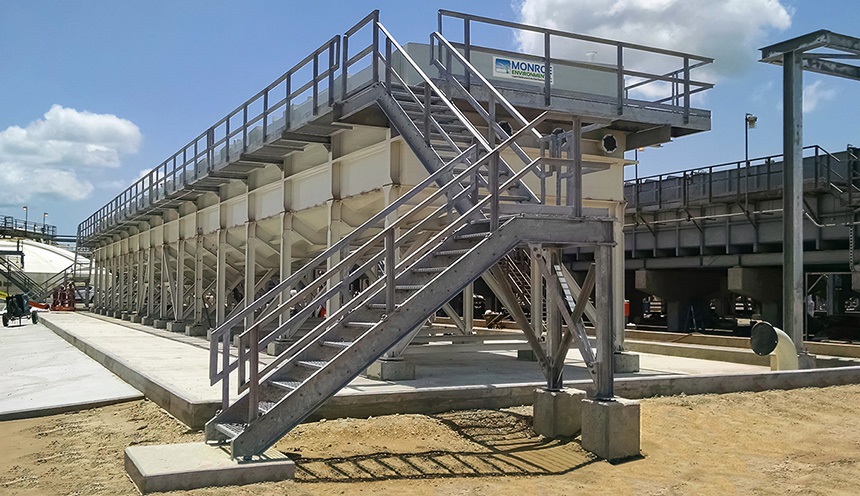
Oil Water Separators
With oil poised to remain pivotal in meeting worldwide energy demands for decades, optimizing extraction and hydrocarbon processing operations becomes increasingly imperative in balancing productivity, profitability, and ecological factors amid market complexity.
Table of Contents
Amplified water volumes generated as the cost of pursuing scarce reservoirs mean efficient, economical oil/water separation and skimming prove essential to keeping pace sustainably. Thankfully, unprecedented advances from onsite separators to offshore skimming vessels now redefine what efficient hydrocarbon recovery constitutes through unprecedented waste reduction and purified yields even from the most challenging inputs.
This analysis details leading oil-water separation and skimming innovations to understand how and why progressive operators increasingly upgrade legacy infrastructure against modern marvels, reconciling business growth with environmental obligations swelling by the barrel.
Understanding Oil Skimming
Before delving into the recent strides in the field, it’s imperative to revisit the foundational principles. This lays the groundwork for understanding the significance of strategic skimming in its entirety.
Whether for separation, environmental remediation, or maintenance cleaning, oil skimmers essentially recover hydrocarbons floating atop water sources via pumps or physical media that isolate and divert oil exclusively despite the considerable water volumes that are often present.
Optimized skimming proves indispensable because retrieving saleable fossil fuels directly transforms wastewater liabilities into regained profit revenue. Moreover, skimming removal initiatives prevent ecosystem damage from ocean dumping or risky drainage, potentially polluting soil/groundwater reservoirs long-term through uncontrolled dispersion.
The above outlines why many enterprises now demand high-efficiency oil skimming solutions under sustainable operational and environmental performance.
Advanced Oil Water Separators
Incorporating next-generation separation platforms yields step-change benefits:
- Operational Efficiency
Patented floating intake heads with built-in wave suppression collect 98% pure oil even in stormy offshore seas while self-adjusting water hydraulic valves handle heavier viscosity crudes that previously escaped systems limited by fixed extraction points, frequented by clogging from solids. This enables reliable, hands-free automation.
- Cost Savings and Economic Benefits
Small facility footprints and excellent chemical resistance minimize onsite infrastructure and maintenance requirements while lowering emulsion treatment demands. One unit replaces acres of aging API basins, freeing capital for core production investments elsewhere. Estimated lifetime expenses contract over 40%.
- Environmental Compliance and Sustainability
Little to no discharged water traces demonstrate responsibly pure hydrocarbon stream purity matching ecological concerns; furthermore, spill prevention instrumentation alerts unplanned emission risks well before incidents arise.
- Integration with Existing Systems
Standard wiring diagrams and communication protocols ensure lightning-fast installations are measured in days-not weeks. Flowback customizations also help existing brownfield site constraints transition to more sustainable models.
- Resource Recovery and Reuse
Inherent efficiency synergies finally reconcile long-deemed mutually exclusive goals between aggressive fossil fuel production targets and uncompromising ecological stewardship commitments coexisting through pinnacle technology balancing stakeholder needs today.
Contemporary accomplishments epitomize the pinnacle of environmentally conscious petroleum extraction ventures, showcasing leadership for future generations.
Real-World Applications and Success Stories
Myriad enterprises now reap game-changing gains from upgraded separation and oil skimming capabilities:
- Industries Benefitting
Oil terminals, pipelines, maritime product carriers, biodiesel producers, environmental contractors, breweries, metal fabricators, and more leverage high-tech separators, which centralize multiple ecosystem protections from contaminations once and require extensive peripheral handling afterward.
- Success Stories
A Texas saltwater disposal facility struggled with poor oil/water intake differentiation reliant on visual inspection. By upgrading to dual laser-controlled intake valves plus automatic chemical dosing – daily workflow efficiency tripled through automated procedures while boosting oil skimming rates by 57% amid soaring wastewater inflows of over 2 million barrels monthly. New high-efficiency equipment paid itself in less than 15 weeks through extra oil sales alone – exemplifying smart capex allocation.
Another offshore vessel tripled route collection capacity from isolated platforms by switching to self-adjusting hydraulic skimmers without enlarging physical storage. This put an end to wasteful and ecologically questionable dumping practices offshore, which often struggle to contain unpredictably large production water deposits, thereby historically limiting ship oil collection rates.
The evidence demonstrates that the collective achievement of amplified efficiency, capacity, and sustainability drives tremendous progress.
Practical Tips for Implementation
Follow these insights to streamline lasting separator functionality:
- Consult separation specialists on ideal equipment combinations matching well-inflow conditions and effluent purity targets sought to retain higher-value hydrocarbons. Exact specifications avoid under or overbuying.
- Calculate comprehensive financial impacts from enhanced oil recovery, lowered chemical usage, eased labor, plus any sustainability tax credits or violation penalties avoidance. This reveals more extraordinary profitability windfalls than equipment costs alone, considered in silo.
- Set automation protocols to ensure seamless integrations with current site monitoring and analytics tools, leveraging the IoT advantages systems. This maximizes real-time performance transparency.
Conclusion
In closing, with the increasing global demand for energy necessitating heightened oil production across various regions, regardless of the substantial volumes of process water generated, the efficient separation, collection, and responsible management of resulting emulsions are crucial.
As highlighted in separators and skimmers, innovation now reconciles the world’s thirst for fossil energy with uncompromising expectations around ecological protections safeguarding precious ecosystems for generations ahead. Top operators will continue embracing these cutting-edge capabilities, elevating stewardship commitment until mutually exclusive goals of maximized profits and irreproachable sustainability are finally fully aligned through the solutions.
Read our blogs Magazines Victor






